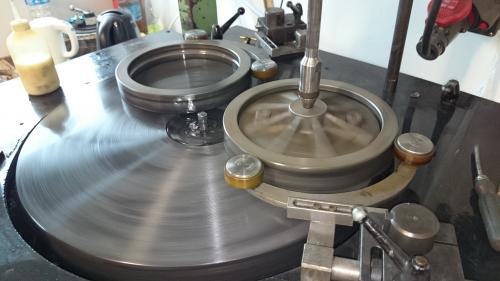General principle
Many finishing processes can be applied to ceramics. We can class them into two categories: those applied for aesthetic reasons (polishing, decorations, etc.) and those applied to obtain a specific property (metallisation, surface finish, traceability, etc.)
Detailed description
The main finishing processes are:
- Polishing, which provides a very smooth and shiny appearance or very thin surface finishes.
- The principle is to remove small bits of material, by mechanical abrasion using very fine millstones or liquids with fine abrasives.
- In contrast, micro beading gives a "rougher" appearance.
- Very hard, small beads (sand or glass) are projected at high speed to modify the treated surface.
- Tribofinishing is a form of polishing which gives a very thin surface gloss finish and also rounds off any sharp edges.
- Reproduction, in a workshop, of a well-known natural process which is the abrasion of workpieces in a liquid and abrasive mixture which is stirred over many hours.
- Engraving, which is used for decoration, identification or traceability.
- Engraving is generally performed with a laser and can be superficial or very deep.
- Deposits of various forms such as paints or lacquers, PVDs, etc. They are used for decoration but also to provide specific properties, such as making a ceramic conductive in certain places, for example.
For more information
Raw material
Finished product

